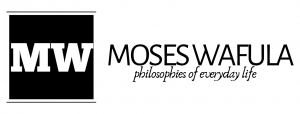
Debt is good thing especially for corporates and businesses. Debt allows organizations to minimize their tax obligations even when they have the funds to finance new projects. Debt at a personal level can have detrimental effects. In cases where debt collectors may be involved, individuals in debt may end suffering mental anguish. The anxiety that comes with loosing your house or car cannot be very pleasing. Here below are some of the tactic you can use to get out of debt.
American consumers are in debt with unsecured loans and personal debts, and the resulting debts in general have increased. During 2020, Experian said that Americans owe 927,000—the largest debt in history. Who has the greatest amount of debt? Generations 1 and 2 owe an astounding $44,433 followed by Boomers ($97290) and Millennials ($87446). Debt includes student loan debt, student credit card debt, and student loans. You may have some debt at your disposal if you read it.
The 2019 American Consumer Credit Union Consumer Credit Score was $96,060 versus $92,070 in 2018. These numbers also include credit cards, mortgage loans and student loans.
How do I get out of debt fast?
It’s really possible to create a debt free plan from scratch. With some fundamental changes in your life, you may find yourself getting out-of-debt easily. However, you have to make changes in the way the money works out for you. Developing a strong self-discipline is essential. The process becomes incredibly easy with the right lifestyle changes. Let me take over your life. You can get free from unsecured debt by taking some simple steps.
It’s really possible to create a debt free plan from scratch. With some fundamental changes in your life, you may find yourself getting out-of-debt easily. However, you have to make changes in the way the money works out for you. Developing a strong self-discipline is essential. The process becomes incredibly easy with the right lifestyle changes. Let me take over your life. You can get free from unsecured debt by taking some simple steps.
Set up a Budget
When you have tracked how much money you spent then the first step is the preparation. This budget will cover the entire cost of living. It shows you places you can reduce your expenses. You can see where it costs a lot and where you can easily cut costs. There can also be places where you can do things you wouldn’t have planned.
It is important to achieve a balance between affordability and tight budgets in order to avoid debt and save money. It is essential that budgeting takes place and it must also be written. It does not suffice to plan your spending in a mental way but the amount has to be written down.
Why digging out is worth it?
It’s hard when you have high levels of debt to cope with the burden of debt. A 2020 report from Capital One shows that fewer than 5% of American households have a hard time making a good financial decision and the problem of avoiding debt. But financial stress can cause you trouble saving money or making a shopping list.
Getting rid of debt helps improve our mental and physical health and happiness. The ability to earn more money by paying off debt can improve financial confidence and morale, experts suggest, sometimes, a second way of dealing with debt. A “avalanche” or ” snowball ” approach.
Pilgrimage of Repayment
There’s no universal standard for debt. You must establish hierarchy for debt and develop an attack plan to achieve it. Expert advice is provided on low-interest, high-interest loans and non-deductible loans. Taxes if applicable. When you talk about high-interest debt, you must stop paying it. Keep only one bank card to cover emergencies and never carry the rest.
It’s advisable that you set up a savings account for emergencies, and keep your card away. You should try a money-only diet for your repayments.
How debt can negatively impact your life?
The burden of paying off credit cards can cause difficulty in obtaining a loan from another lender. For example, when looking to buy a home the lender will usually require a DTI ratio below 43. It is calculated as a percentage of your current monthly payments divided by your monthly income. Let us assume that the student loan is $300 – $500 and that it is $500 for a car. Your monthly earnings are 3750. This translates to 2667 percent. In this case you could pay up to 612.50 in mortgage payments per month.
Renegotiate the Terms
The creditors meeting began today. Have homework done in advance and keep it in order. Make an informed decision before going into credit counseling. Contact the lending company that holds your outstanding debt. You must start at a banking institution with a good record. Set an appointment and present the damage report and your new budget. Explain what steps you took in order to avoid defaulting on your obligations.
Renegotiate credit card debts
Most of your consumers will probably have no understanding of how renegotiating your cards can pay out lump sums or even monthly charges. It’s called Debt settlements. Can I settle my debts and pay my bills? Just ask. Get in touch with your lenders for lower interest rates on your bank card. If your payments were made correctly, then you could have relief. You may negotiate a card fee as well. If your lender refuses to work with you to obtain new interest rates, it’s possible to request the waiver.
Create a plan to pay off debt: Try a Debt Snowball Method
You now have an effective budget that you can use as a payoff strategy. How can I pay back my debt faster? How can I get the money back? How do you quickly reduce your debt? What does it do when it comes to debt snowballing? This strategy requires that you make fewer than a single payment on every debt. Specific debt is expected to exceed monthly requirements and pay for itself faster. When this debt is repaid you can pick up a new debt and transfer all the additional cash towards it.
Initiate Damage Control
Make sure your bank balance is paid off promptly to avoid recurrent problems. Automate your monthly payments and tighten your financials for reducing debt. You’ll get a higher credit score as time goes by. If your credit score allows it, try acquiring more affordable loans to reduce your debts. It can be easier for you to repay the amount you owe by minimizing interest. Depending on your credit rating, you can consider using your own balance transfer credit card as an option.
Pay more than the minimum payment
If you are trying to escape the debts quickly you should spend your money as quickly as possible. You’re able to avoid any debt and pay it off quickly if you’ve made more than one payment every month. Set up a monthly budget that will cover your debt at least once per month. The total is approximately 20%. Naturally, a new opportunity to improve is an easier way to reach your goals. It is important that your payment exceeds the Minimum Requirements. Is that ironclad?
It’s my debt, I’ll do it
It usually takes a painful decision to get rid of your debt. Those who get too far behind may need to take drastic measures. Soft cut can be substituted with a two piece – one for two walks and a gym membership or “staycation” during vacations. Harder cuts come by selling anything that’s not necessary. All money collected from selling non vital goods should be used to pay off the highest interest loans. Keep your bank account closed when you accumulate money.
Get the Damage Report
The next step is to check your credit ratings. You have the ability to receive an instant credit score from all three credit bureaus – e-commerce and credit reporting. If you are interested in checking your credit score, then check it. Both are free, but you can only see it once per year free of charge. Remember that not all online credit reports are completely free. They will ask you for a credit monitor that will charge monthly if the account is cancelled.
Stop borrowing money
It is important not to borrow any more to pay off the debt. No more swiped credit cards, no more borrowing, no more debts to repay. Rethinking how we view money and debt is crucial. If you plan on getting a credit card and borrowing money, you will want a better way. Resolve to live with cash when making the changes. There’s no debt consolidation at all at this time. You can’t sell one type of loan to another until you understand the situation and plan.
Organize all of your debt and bills
You need to prepare a complete bill of debt for any plan to pay it down. Check your credit card statements every six months. It must include the payment, balance, interest rates, terms and other relevant information. You may be able to determine whether one or many of these credit cards are currently on deferment or on refunded plans. To see what your credit history says, take the loan history to see the total number of current credit lines.
Use two Shovels
Whenever possible, pay more interest on the largest debt. Although it isn’t as efficient as consolidating payments, double payments can increase repayments. Once a debt has been reduced, double your payments for the next highest debt. These strategies are called debt avalanches. You will continue to increase the rate of your debts decreasing in total. Having to double payments on the consolidation loan makes the loan more difficult.
Create a Family Budget
A household member usually has to handle all household expenses. So many people don ‘t know how it happens. You should have strict budgets for debt that everybody knows. Get rid of yourself and a few others. If the lender has no idea how much you’re owed then you should do something completely your own way. Inform them about your debt and plan for payment. Every member of your family must help you track and plan your budget.
Create the best budget to pay off and stay out of debt
Life happens in seconds and your income may be short enough for emergencies, sudden changes or other changing situations. Therefore, a flexible financial plan is crucial. A good money plan may look different. Flexibility is key when pursuing success. If we have drafted a budget we can make changes quicker. Never hesitate to start from scratch creating a complete new written budget. Change your plan when things change.
Track your spending
How do we pay down debt and get rid of it? I’ve been trying my hand at cutting budgets in the past. It’s best to track your monthly bill and day-to-day expenses. Keep an eye on your credit report when completing the transaction. It is possible to trace your money online using many different methods. What methods are used is generally outlined below.








